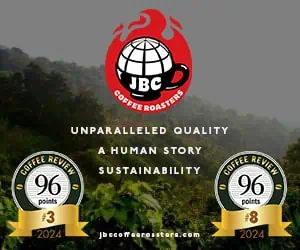Decaffeination processes using carbon dioxide (CO2) differ in their details. All take advantage of the fact that carbon dioxide, when compressed, behaves partly like a gas and partly like a liquid, and has the property of combining selectively with caffeine. In the most widely used CO2 process the steamed beans are bathed in the compressed carbon dioxide and the caffeine is removed from the carbon dioxide through charcoal filtering, just as it is in the water-only process. However, the flavor components remain in the bean throughout the process, rather than being soaked out and then put back in again, as they are in both the Swiss Water and the indirect solvent processes.
Since carbon dioxide is the same ubiquitous and undisputably "natural" substance that plants absorb and humans produce, and since, in most versions of the CO2 method, the flavor components remain safely in the bean throughout the process rather than being removed and put back in again as they are in the Swiss Water process, carbon dioxide methods would seem to be the decaffeinating wave of the future. However, coffees decaffeinated by the CO2 method have been slow to come onto the specialty market, and reviews have been mixed.











